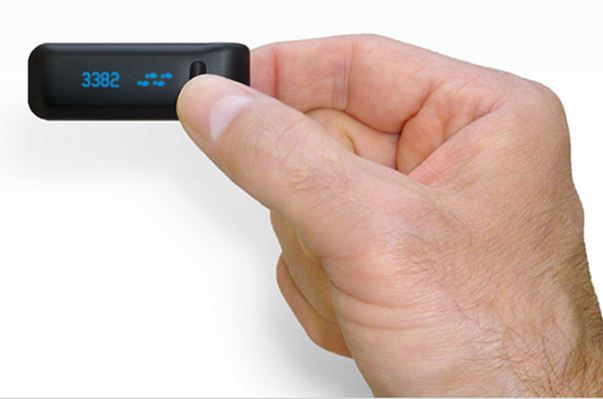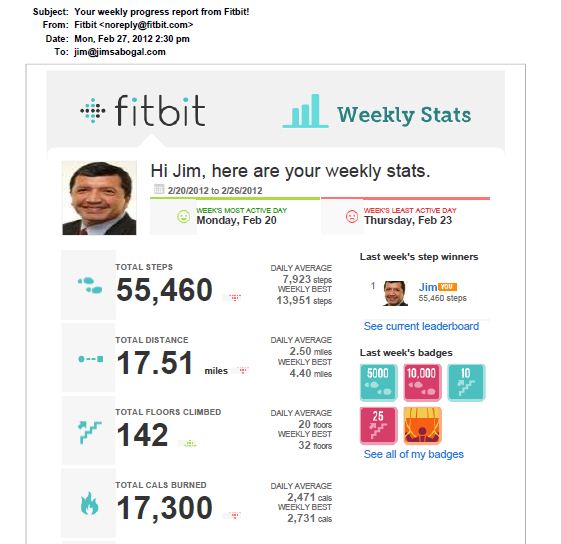In December of 2011 I started using the Fitbit Ultra, a wearable wireless device, to help me watch my daily fitness (or lack of exercise).

I do not claim to be an athlete, my personal goals are to live a more active and healthy life. So this month’s blog post is all around the use of these devices.
The Fitbit Ultra is one of a few devices now on the market (refer to 3 New Fitness Gadgets).
These devices look to answer three things, in my opinion:
- A monitor for your health and activity
- Provide feedback if you ‘are exercising enough’
- Single source of ‘personal data’
My background
I offer IT services consulting advice within the Life Sciences and Healthcare industry. So I have an interest in this area. My daily routine changes, as is the case, between travel and office work – team projects (request for proposal (RFP) activity and orals presentation preparation) to new client meetings. Like any consultant or sales rep a life on the road and in the office. Not to mention finding time for this blog and added social media activity. As an early adopter of this technology I was debating between the Up from Jawbone or the Fitbit Ultra. With Jawbone having manufacturing difficulty I settled on the Fitbit Ultra. Not a bad choice in my opinion.
A monitor for your health and activity
This ‘wearable’ device is small and compact. All you need to do is to remember to wear the device as part of your daily and evening routine. The Fitbit is not waterproof nor does it contain a GPS device. I like the fact that the Fitbit can be worn while you sleep and offers you feedback on your sleeping patterns.

Are you exercising enough?
I am not an athlete yet I want to make a healthy lifestyle. The value in monitoring my daily routine is so that I can ‘change it up’ to include some form of exercise. When I’m working from home I can go for a jog or do some yoga. Of course when you’re traveling this can disrupt your routine, and I find myself to easily distracted and may forget to run or do some yoga. For the serious runners out there you may want to supplement the Fitbit with apps like RunKeeper which uses the GPS found in the iPhone to give exact distance and time recordings.
Single source of data
The biggest draw for me with the Fitbit is that you can enter daily information via your smartphone or from your laptop. The device requires that you synchronize the content of the data from the Fitbit to your account via a USB connected sensor. The Fitbit will keep up to three days worth of data. Here is a snapshot of a standard report that summarizes my activities:

The Future of Medicine?

In the latest product announcement for Nike and their Fuel device “By 2017: 170M wearable wireless health and fitness devices. Monitoring your health with mobile devices will be the next improvement in healthcare for all of us. We will see the next iterations of these devices as they get smaller and provide more connectivity via apps that can combine your personal data. I like using this device and for now it meets my health goals.
Thanks,
Jim